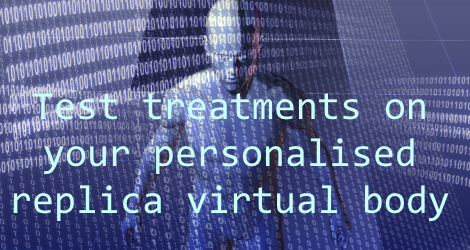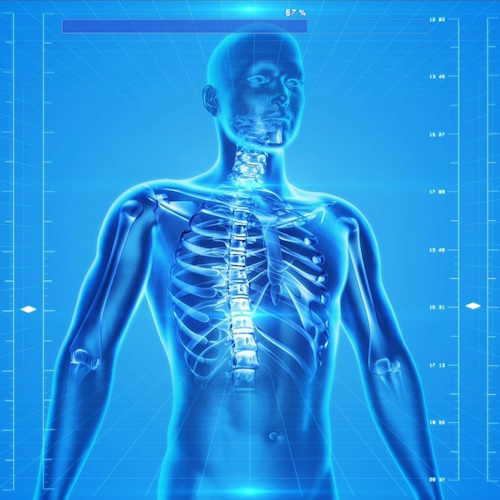Virtual Bodies are Accelerating Research and Diagnostics
Technology accelerates rapidly because it’s growing exponentially, but does this apply to medical technology? One place it certainly does is in virtual organisms – 3D digital models of cells, individual organs and even whole bodies.

Lots of medical research is initially based on animal models – that is, studying non-human organisms such as worms, mice or monkeys, to see what affect drugs, gene therapy and physical procedures have on them. One advantage of these models is ethics - people are less concerned if 1000 worms die in the course of science than a single human, though of course there are many that would prefer to ban animal testing especially on our closest relatives such as other primates. Another advantage is timescales, and this is particularly important when looking at longevity treatments. Even if we had a drug that we were confident did no harm, and signed up 1000 willing human volunteers to test it, it would take decades before we would know if it was an effective anti-aging treatment. However, using worms with lifespans of weeks, or mice who only live for 1-2 years, the effectiveness can be seen quickly, enabling different types and dosages of drugs to be tested before considering human trials. But as well as the animal rights considerations, this still takes years of research and a lot of manual (and expensive) handling of the creatures under test.
So what if we could create a virtual model of an entire worm, mouse or even human. If this was accurate enough to respond to physical and chemical factors, taking into account the complex interactions within the body, we could test as many different drug candidates as we could feed into the computer. And as computing power continues to grow exponentially we can then turn up the speed and see the results overnight that even with worms might take several weeks.
We’re already getting close to this scenario. Research teams around the world are working on individual organs and also linking these up together to demonstrate how the entire body would react. Here are just a few examples:
- University of California-Davis School of Medicine’s ion channel based heart model predicted adverse effects of 2 drugs used to treat abnormal heart rhythm.
- The mechanics of the complex geometry of the skeletal system has been modelled by the University of Jyväskylä to determine how different exercises induce bone strain and strain rates and to research the causes of degenerative arthritis.
- Living Heart Project has developed a physics-based digital 3D model of the heart that can be used to virtually test new physical devices and aid heart disease research, and allows surgeons to walk inside a massive heart projection to really understand how the organ works.
- Virtual worm brain (OpenWorm project) simulates all the connections between the c. elegans worm’s 302 neurons and is able to control a Lego robot without a single line of code.
- The EU’s Human Brain Project has developed a simplified virtual mouse brain mapped to different parts of a virtual mouse body, including spinal cord, whiskers, eyes and skin.
- Virtual Physiological Human programme aims to create a computer simulated replica of the human body (“in silico”).
This last project also is also applicable at the treatment end of healthcare. Once a detailed and accurate virtual model of a “standard” human has been developed, this could then be configured with the physiological parameters to match an individual. Their personal data could be input into their virtual avatar to predict how their specific body would react to drugs and other treatments. Already, for example, the University of Pittsburgh has modelled the complex interaction of multiple inflammation markers in blood enabling trauma patients’ risk of multi-organ dysfunction to be calculated and appropriate intensive care allocated.
Personalised medicine is mainly trying to predict how individuals will respond to pharmaceuticals based on their genes – which given the efficacy of most drugs is better than blindly working down a list of potential treatments; but what if you could then try that drug in a personalised virtual body and see how it really reacted given a multitude of individual factors? That could save time finding the best available option, save money in the wasted time of healthcare professionals and drug costs, and most importantly save lives.
Links to research mentioned in this blog post are available on the Digital Modeling page.
Mentioned in this blog post:
Click on resource name for more details.
OpenWorm
Open science project to simulate the roundworm Caenorhabditis elegans at the cellular level
Topics mentioned on this page:
Digital ModelingLongevity and coping with an ever increasing population
Warts precision medicine got to do with it?



